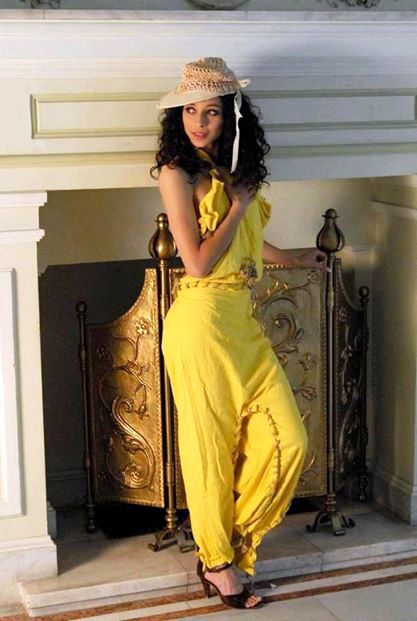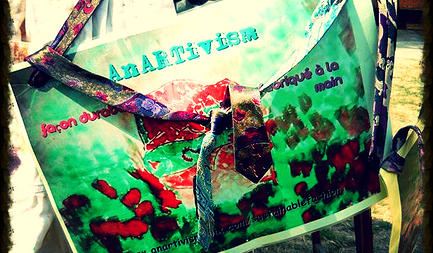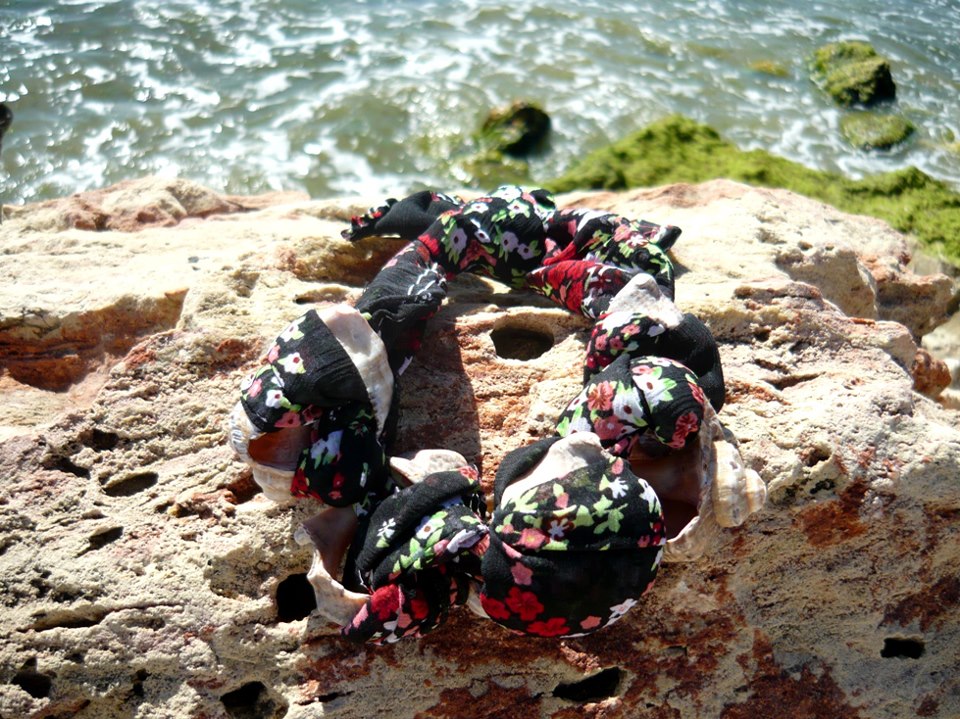Ever since I was a kid, I was fascinated by textiles and crafting.
Having a family record in this domain, with a grand grand-mother owning a small clothes factory and a grand-mother skilled in crafting and making clothes for the family members, I probably inherited the passion and the talent.
Making clothes for dolls as a kid is natural for every little girl, but what do you do when you find yourself captured by this fashion touch again in your 20’s? You just decide to go for it trying to see what comes out. And as a person keen on arts that have a social engaged purpose, I looked at my vision as a thousand miles journey into change.
I started years ago when I accidentally found some pieces of old clothes in my house that seemed to be forgotten and useless. The idea kicked in and I immediately started to envision the new brand article. It was an old shabby dress that needed life. And that very moment was the start of this journey into the eco-fashion field.
Therefore, the beginnings were focused on clothes and soon some 50 piece collection was brought to light. Dresses became blouses, skirts became bags, belts became necklaces, etc. At that moment, my only possible wish was to put them out there and unmask the idea that stood behind them.
When I did this, everything just followed—exhibitions, stage design, festivals and events, fairs and presentations, workshops and debates, European entrepreneurship mobility and environmental contests.
In time, accessories their way into the picture and I started to focus more on this by using absolutely everything that would end up as trash. As my aim was brought to light, many people began showing interest and looked more attentively at their wardrobes. Some started to re-do forgotten articles and some helped me by bringing useless materials to give them a second life.
Textile is my main work material, but in time I created articles from wood and plastic. I’d say it is quite an adventure!

If I were asked whether I prefer one material to another, I could not choose. What is important for me is the recycling process, getting something new out of the old. And when choosing a creation process, I am anything but conventional. There is no rule—I just see a new frame in the old one.
Isn’t it about more than just fashion? Of course it is. It is about making my current clothing last.
My whole idea from the very beginning was to build a real concept based on the idea of active citizenship and anti-consumption. My initiative comes from a strict education in consumption awareness and an off-grid life experience—a green life searched and applied as much as possible.
In this context, creativity bursts into concrete articles.
I assist in times of transition when individuals turn their faces toward sustainability in every field of activity. I ask questions such as:
How can I make the smallest difference in my community by shifting old patterns into new ones?
How can I change a person’s mentality?
While I am proud to be the first in my community taking an initiative, when looking back to the development of the process, I can’t say it was easy. It was a path that I assumed to be mine with the responsibility of becoming a collective work in progress where people can begin understand the idea of being socially engaged and sustainable.
Education has drastically shifted it’s path by moving more and more towards sustainable context and awareness. Parents and teachers are the actors in this process of change for future generations.
We are actually witnessing youth sustainable initiatives at a global level. And that is amazing!
One of them is my personal concept—AnARTivism (Ana+art+activism). The inside impulse and the desire for promoting the idea of fabric recycling emerged as a flashlight.

My articles are unique pieces exclusively hand-made. The technique that AnARTivism has chosen to focus on represents a tribute to this creative work method, to the unconventional and avant-garde fashion style that characterizes the artist in particular.
AnARTivism represents a manifest but it also carries an urge to take action and change the way of thinking from ordinary and destructive to sustainable and reusable.
From this visionary thinking, I encourage people to reach new paradigms that are in favour of environmental protection as well as standing against hyper-consumption.
The concept also tries to harmoniously and equally gather the three essential factors of a sustainable business:
1. Labour force: Time and tools
2. Authenticity: Creativity
3. Access to buy products
The best tip I can give is to pay attention to what is around us. Change for the better is just a step away!
“Clothes have more important offices than merely to keep us warm; they change our view of the world and the world’s view of us.”
—Orlando—Virginia Woolf
Follow my works on my website and Facebook page!
Love elephant and want to go steady?
Sign up for our (curated) daily and weekly newsletters!
Editorial Assistant: Karissa Kneeland / Editor: Renée Picard
Photo: Ana Nedelcu











Read 0 comments and reply